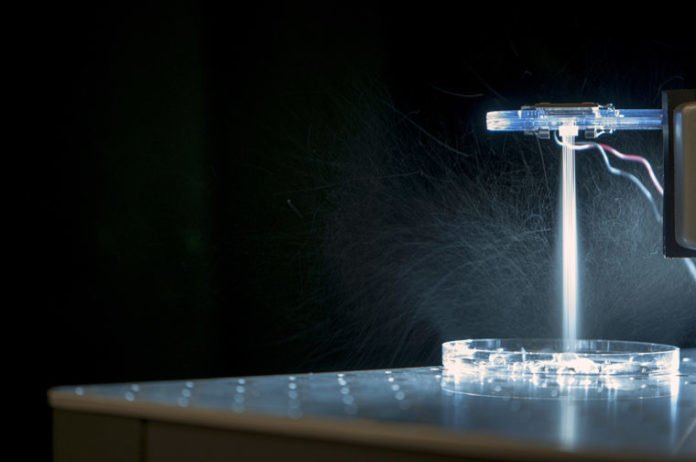For many years, scientists have been trying to harness the overall efficiency of gene therapies that insert genes into a patient’s cells to treat aggressive diseases such as cancer. However, it is difficult to get synthetic DNA molecules into cells.
Now, scientists at Washington University in St. Louis have developed a new method that allows efficient insertion of large molecules — such as DNA, RNA, and proteins — into cells and propels them into the cell nucleus.
They used the technique called Acoustic Shear Poration (ASP) for merging with electrophoresis, which uses ultrasound waves and focused mechanical force to create nanoscale holes in the cell membrane that are big enough for large macromolecules or nanoparticles to pass into the cell’s interior.
ASP has accomplished more prominent than 75 percent conveyance effectiveness of macromolecules. DNA addition, or transfection, which is of most enthusiasm for quality treatment, is essential all the more difficult. However, the joined utilization of mechanical and electrical powers spearheaded by Meacham and partners yields around 100 percent change in transfection versus unadulterated mecha operation.
J. Mark Meacham, assistant professor of mechanical engineering & materials science at Washington, said, “We have demonstrated our poration technique using cancer cell lines and patient-derived primary monocytes, which is an important achievement, but the end goal is to use the new combined method to successfully modify T cells from a patient’s immune system. We would take cells extracted from a patient, run them through our device, and modify them; then, they would be reintroduced to the patient. That’s the Holy Grail of personalized medicine and emerging gene therapies.”
“The extreme difficulty associated with a delivery of genes into cells for use in these gene therapies has motivated the pursuit of effective transfection methods.”
“Non-chemical, non-viral approaches, which take advantage of mechanical or electrical stimuli to overcome cellular barriers to gene transfer, are compelling for many reasons, including safety, cost, and the potential (or lack thereof) for large-scale manufacturing of therapeutic cells. For such methods to be successful, pores must be created in the cell membrane that is large enough and stays open long enough to insert molecules while not damaging or killing the cell and delivering the molecule to the cell’s nucleus where it can work.”
We apply focused mechanical forces, such as fluid shear, which is pushing and pulling on the cell using fluid motion. We take a suspension of cells and use an ultrasonic field to pump fluid through microscopic constrictions in the tips of the nozzles or acoustic horns. This results in a kind of spray. The cells that are suspended in the flow experience intense mechanical stimulation as they travel through this confined space and are ejected from the nozzle orifices.”
During experiments, scientists found that the device creates pores in the cell film of 100 to 150 nanometers, which take into account the conveyance of even extensive payloads into the cell. Likewise, the pores stay open for up to a moment, which is sufficient time to convey particles to the cell. The method can be utilized with any cell compose and suspension medium and in addition to most biomolecules and nanomaterials.
Meacham said, “We found that the acoustic pressure field and local shear stresses acting on the cell due to the fluid flow are critical to creating pores in the cell membrane. The most efficient membrane portion was observed after the cell was exposed to the short duration, the high-shear environment at the nozzle constriction as the cell is forced through the nozzles of our device.”
Results of the research are published in Scientific Reports.
